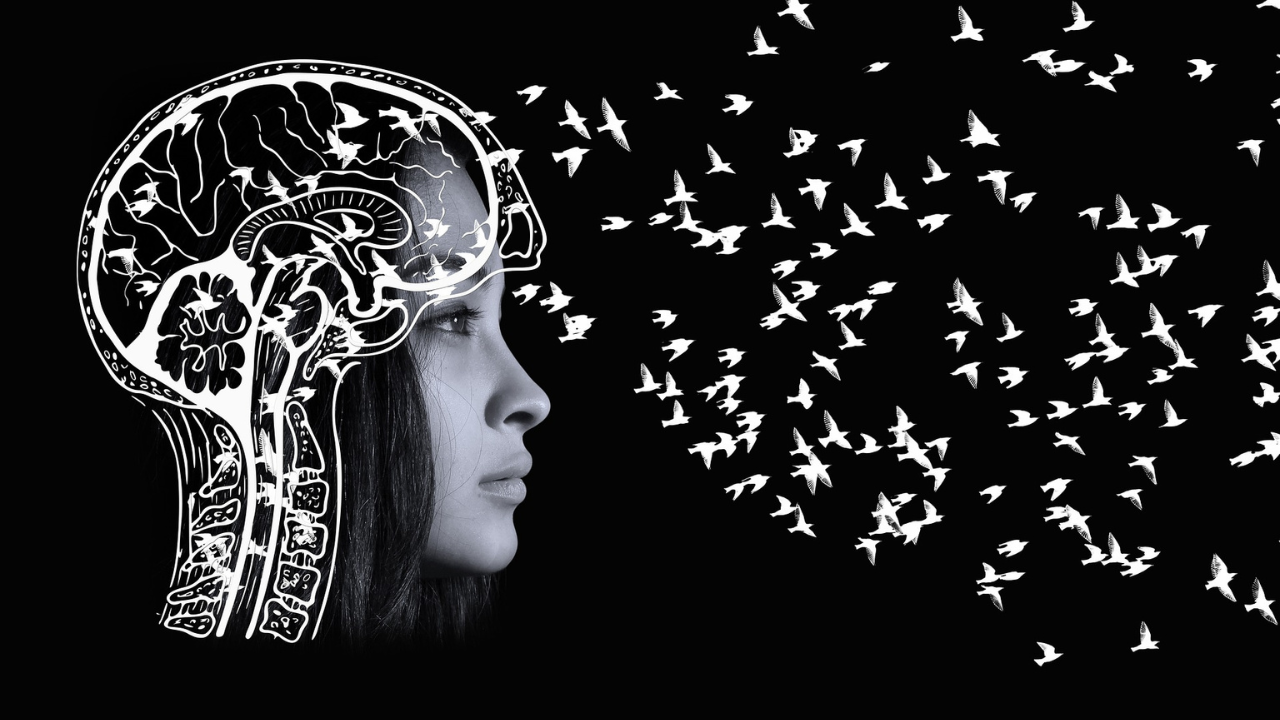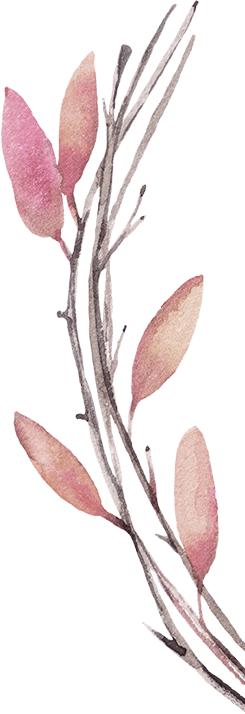Let Go of Self-Sabotaging Patterns That Keep You Emotionally Eating

Contents
- Notice the common language we use that demonstrates the reality of these multiple selves at work:
- Here are some examples of this from my one-on-one client work:
- Here’s a three-step process to initiate this exploration and soften the patterns that always seem to get in the way:
- Step 1. Identify your most prominent Nutritional Selves that are in conflict
- GROUP ONE
- GROUP TWO
- Step 2. Notice the burden and ask the right questions.
- Step 3. Bring in an antidote Inner Self and work to strengthen her.
If you want to be a nutritional goddess and say goodbye self-sabotage you must get to know your inner selves. How you show up as an eater reveals so much. Not only does your relationship to food reflect how you feel and what you believe about yourself, but also reflects how different parts of you interact with one another. Yes, different parts of you.
Notice the common language we use that demonstrates the reality of these multiple selves at work:
“Part of me wants to eat well, but once 6 pm rolls around another part of me doesn’t seem to care.”
“Part of me wants to love my body, but another part doesn’t want to love it until it is different.”
“Part of me wants to “jump-start” my nutritional habits with a detox, but another part just wants to focus on basic day-to-day health.”
This sort of language is so common and illustrates that, yes, our perception of being our own best friend and our own worst enemy can feel so spot on.
Here are some examples of this from my one-on-one client work:
- Erica has been tracking her carbohydrate intake on the new app on her phone and is feeling proud of her efforts for the week. She visits her family for a birthday party on Saturday, comes home, and finds herself rummaging through the cabinets to find her boyfriend’s potato chips, eating handfuls standing in the kitchen while she is alone.
- Mia is excited to go on a trip with her beloved but notices she’s also anxious about eating during the trip. She attempts to quell her anxiety by planning on sticking to a semi-strict eating plan while vacationing. Once she arrives, something else takes over and she feels she is indulging every day. She’s already planning her detox protocol when she gets back home.
- Anne has finally had it. She’s read enough about sugar to know it’s doing her body no good and may be contributing to body weight and hormonal concerns. She decides to cut out sugar. 4 days later, she eats 6 peanut butter cups. 4 more than she’d usually eat in a sitting. And the pattern keeps re-surfacing.
- Sara has been beautifully dedicated to her new eating and exercise routine. Her diet is feeling solid and her body is feeling more lean and toned. The problem is, whenever she gets close to her goal “something happens” and she somehow sabotages herself. This time she had a weekend of eating a good deal of vegan ice cream.
- Rachel just finished 6 weeks of a Paleo-style sugar detox. Her friends are all planning a girls dinner sans children at a favorite local wine bar. Despite wanting a smooth transition back into “regular eating,” she has 4 pieces of bread from the breadbasket and eats a dessert, feeling overly full and disappointed afterward.
As these women tell their stories, they tend to describe the version of themselves that they believe is their true self (i.e. the self that gets things done, is efficient, has willpower, reaches goals) and then the ghastly other part (that they feel is not the real them) that seems to take no interest in those noble pursuits. This is the part they are trying to get rid of or are constantly fighting against. As you know in any relationship, feeling you cannot love and accept someone until they get rid of some aspect of themselves, rarely turns out well. Instead of trying to sever these frustrating parts of yourself off, why not try something different?
Here’s a three-step process to initiate this exploration and soften the patterns that always seem to get in the way:
Step 1. Identify your most prominent Nutritional Selves that are in conflict
In my work, I’ve noticed that those who seem to struggle with eating, experience a nutritional self from Group One living in conflict with a nutritional self in Group Two.
Here are some examples:
GROUP ONE
The Hungry Wolf: has gone so long without eating, her animal instincts kick in. Her mantra: Must. Eat. Now. She’s beyond hungry. This ravenous type of hunger usually leads to eating the closest available foods rich in fat, carbohydrates, or sugar.
The Rebellious Teen: is just waiting for someone to tell her the way to be a nutritional “good girl” so she can go ahead and do the opposite.
The Closet Eater: has things looking good on the outside. No one would know she has a different and powerful eating personality. When she is alone, she may indulge in rich, indulgent foods (types and amounts others may never guess)
The Hedonist: just wants pleasure – food that tastes good! Why restrain, when you can keep getting those yummy flavors? No rules, nope, no thank you!
The Comfort Seeker: soothes herself with doughy, salty, sweet, or rich foods whether she feels hungry or not.
The Inconvenienced: has many other places she’d rather spend her time than focusing on eating. Her meals may consist of grazing throughout the day on packaged crackers, granola bars, and other convenience foods.
GROUP TWO
The Inner Nutritionist: has a full-time job of keeping a tally of the goodness or badness of your food choices. The rules may change based on the latest book, blog, ancient wisdom, or research she’s currently into.
The Mathematician: is always tracking something. She’s got her calculator or the latest app that helps her measure carbs, calories, points, blocks, or sugar…if the numbers look good, she knows she’s doing alright.
The Judge: is judging the habits of those around her that are eating poor quality food or not being an upstanding nutritional citizen in general, whatever that means to her.
The Critic: doesn’t understand why your body and appetite are wired so poorly, why your body looks the way it does, why you can’t seem to stick plans other people around you seem to be able to. She knows you’ve got it all wrong and is there to tell you about it.
The Ascetic: is concerned with the purity and cleanliness of the body. “Why eat more when you could less?” She is frequently searching for some kind of therapeutic or cleansing diet and assumes, the cleanest, simple diet is the best one.
The Perfectionist: is on high alert about every bite she takes, strictly adhering to a set of food rules she must abide by. One bite could ruin everything. She is often never satisfied with her way of eating, She could always be eating less or eating cleaner or eating more whole foods or less sugar. Her ambitions are usually working in tandem with body perfectionism.
The Punisher: can often have eating habits that have a Group One feel, however, the Punisher notices when the eater has slipped in the slightest with her diet (a sister to The Perfectionist), and “punishes” her by driving her to eat more food until she feels emotionally depleted and physically unwell.
Step 2. Notice the burden and ask the right questions.
Many vacillate between Group One and Group Two. Both of these groups are often burdened by fear, anxiety, or self-judgment, yet each group deals with it differently. Group One is our more instinctual self whose knee-jerk response is to self-soothe by whatever immediate means necessary. Group Two is our more socialized self whose knee-jerk response is to “get it together,” restrain, criticize or control. Neither group is free.
Allowing ourselves to really see and feel the burden of this polarity, carries with it an invitation to ask more helpful questions.
Instead of asking, “What’s wrong with me? Why can’t I just get it together?” we can open to questions like, “How do I handle my hunger and appetite more wisely? How can I work to soften my own nutritional perfectionism without getting pulled into unconsciousness (i.e. going wild with food)? How do I learn to live in a nutritional Grey Zone, so the way I approach eating isn’t so black-and-white all the time? What does REAL self-care look like? And that brings us to the very important work of step three:
Step 3. Bring in an antidote Inner Self and work to strengthen her.
The Loving Mother: is attuned to your body needs and feelings, hears all parts but does not buy into the knee-jerk reactions and impulses they each have. She is grounded and knows what is best. She knows what will make her body feel unwell so she sets reasonable limitations and leaves room for pleasure, too.
The Earth-Child: feels connected with Nature and eats with her inter-dependence in mind and heart. She is amazed by plant life and it’s nourishing and medicinal qualities. She’s led by reverence, not rules.
The Explorer: is inspired by curiosity when it comes to diet. She is free to try anything she likes with her diet without judgment. Bonus: She has the freedom to change her mind at any time.
The Epicurean: has a real appreciation of fine food and drink. She eats what she loves and the best versions of it. She’s very present while eating because presence means even more enjoyment.
The Compassionate Realist: knows, “Hey, I am not perfect, but that’s not the point. I still love and accept myself fully even with my eating quirks.” She also knows that one bite of any food will have little impact on her health and weight. She trusts her body and her metabolism. She’s grounded and not driven by fear.
The Naturopath: trusts the human body’s capacity to heal itself, given half a chance. Do you feel the empowerment after reading these antidote Inner Selves? Cultivating their wisdom and strength is the work. Why?
Because these are the most compassionate and resourceful selves that lead us to feel like the true lady of the nutrition household. This is my invitation to you: Begin to bring awareness to your Nutritional Selves and dive into this worthwhile 3-step exploration! Ask for help from those who have done the work themselves.
Now I want to hear from you: What parts do you identify with within yourself from groups one and two? What antidote self-do you feel would serve you best?





Kristy Petersen:
OMG… “Part of me wants to love my body, but another part doesn’t want to love it until it is different.” This is me!!
And all the “women” are me too!!
Group one Im “The Hungry Wolf” group two Im the “The Punisher”
I would love to be “The Compassionate Realist” but feel due to my love of sweets i would probably end up rather large! So “The Loving Mother” would be perfect.
Another amazing read, thank you Laura & thank you Femme Coach team for displaying it, I have a request/demand/idea whatever you want to call it haha I NEED….want all the TLC articles printed into a book, so i can go back over and highlight the points that apply to me and help, what a great idea hey!
#MVP Kristy haha xx